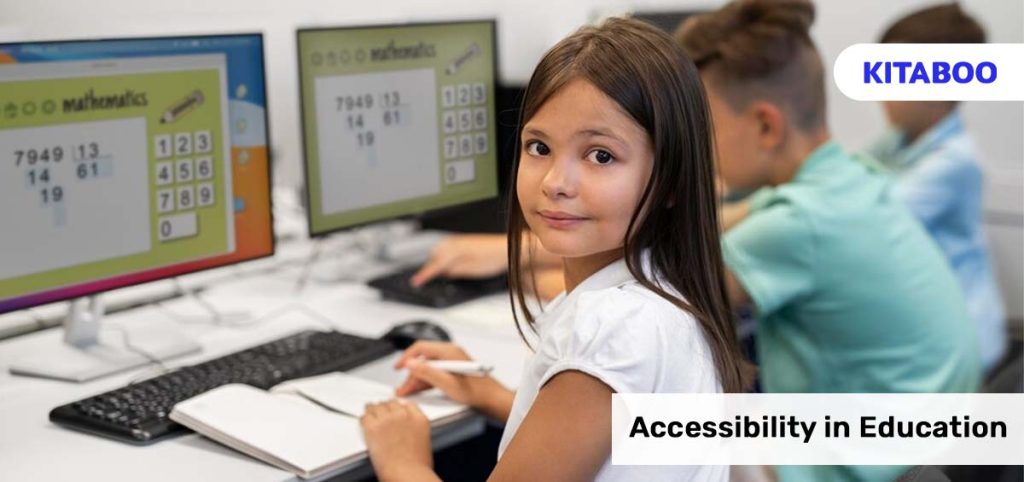
Inclusion in the Classroom: The Challenge of Making K12 Education Accessible
Summarize this blog with your favorite AI:
The traditional school system has several gaps and inequities, many of which were exposed during the pandemic in 2020.
A report by McKinsey recommends a reimagination of school education to enable it to serve diverse learners. The report states that paying more attention to aspects such as technology for access, mastery-based learning, holistic support, and future-of-work skills would give K12 education delivery the 21st-century boost it needs.
In this blog, we understand the barriers to an inclusive K12 education and how the introduction of eBooks can play a role in bridging these gaps, at scale.
Table of Contents
Key Access Barriers in K12 Education
K12 education is a building block for learners across the world. Yet, content accessibility continues to be a challenge. Here is a snapshot of globally-common challenges:
- Traditional education primarily focuses on learners relying on instruction-based lectures and their ability to read and write. However, learners have diverse needs and hence, should be able to learn through relevant formats. More efforts need to be made to ensure versatile content accessibility.
- Language is yet another barrier that prevents native speakers of a wide range of regional and national languages from accessing language-inclusive learning.
- Quality of education is limited, especially in underserved areas, due to a lack of adequate funding and resources, which impacts learning outcomes.
- Another barrier is the lack of adequate teacher training to deliver high-quality education. Teachers are often overworked and loaded with administrative work.
- Learners with mobility issues cannot travel to schools for their education, often missing out on quality education, and at times, any education at all.
- The cost of education is continually rising. For example, physical textbooks are becoming more expensive to produce. Hence, digital alternatives such as eBooks are gaining popularity.
eBooks vs. Printed Books
One of the top examples of innovations in education is the introduction of eBooks, or eTextbooks, which address several barriers in the traditional K12 education ecosystem.
eBooks are an important learning tool in the transition to agile, inclusive, accessible K12 education. They come with a wide range of functionalities and features, that can be leveraged to break learning barriers.
- For instance, eBooks come with robust search functionality, that makes it easy to find information.
- They can be hyperlinked to related content.
- They come with a wide range of interactive learning tools which go beyond the written word of physical textbooks.
- Despite all these features, they are less expensive than print versions.
- They also do not weigh a ton in one’s school bag, unlike physical textbooks.
Now, let’s understand the advantages of eBooks vs. printed books in-depth, and how eBooks are revolutionizing contemporary K12 education.
How eBooks Make K12 Education Inclusive?
Here is a deeper look at how eBooks, one of the top examples of innovations in education, are enabling access for a wider learner demographic.
1. Cater to Diverse Learning Styles
Contemporary eBooks come with several visual and audio aids such as videos, audio representations, Infographics, images, and interactive quizzes.
Learners with reading challenges can use the read-aloud feature to listen to their eBooks. They can easily go back and revise various chapters, rewatch videos, and access audio representations and other content on demand.
Learners can also zoom into digital images to view them more intimately. Thus, the modern eBook offers more power to both learners and their teachers, through content accessibility.
2. Higher Retention with Immersive Experiences
Some eBooks leverage technologies like virtual reality and augmented reality, which provide an immersive experience.
For example, instead of merely reading about the solar system, students can view and experience the depth and breadth of the solar system. They can view the planets and the sun in context with each other.
This is a cost-effective way to empower K12 education learners to absorb and retain information much faster.
3. A More Engaged Classroom
eBooks come with several interactive experiences that enable teachers and students who are logged in from any location to stay engaged.
They can leverage functionalities such as search, annotations, and highlighting to add more challenges to the learning experience.
They can access several reference links, which increases their scope to gain additional knowledge. Gamification is also embedded in several contemporary eBooks, thus adding the concept of reward, leaderboards, and challenges to K12 education.
4. Measuring Learner Engagement
It is often challenging for educators to measure learner interest and learning effectiveness, except through exam results.
On the other hand, the most valuable aspect of eBooks is that they enable educators to access data analytics around learner behavior and usage.
They can keep track of how each learner is engaging with the content, how much time they are spending on the eBook, and how many chapters are being read.
Educators can also get a sense of which types of chapters and content formats of popular, and which ones require revamping, to increase learner engagement.
For instance, if learners find a specific chapter very complicated, more visual and audio aids can be introduced to support it.
5. Access Across Multiple Devices
K12 education learners use a wide range of devices to access eBooks. However, not every learner has the means to purchase the most sophisticated smart device.
This is where usage of the ePub format makes eBooks responsive across a wide range of devices and operating systems, unlike non-response PDFs eBooks, where readability is a challenge.
Today, it is simple and cost-effective to produce ePub format eBooks using digital publishing software.
Conclusion
Today, K12 educators have access to several sophisticated but easy-to-use tools to help in the design and create engaging content. For instance, digital publishing platforms like KITABOO make it easy for them to create, publish, and distribute eBooks.
As the demand for eBooks in K12 education goes up, publishers must work towards ensuring content accessibility by producing high-quality, interactive eBooks that are responsive on a spectrum of devices. This is the way forward for the future of K12 education.
Reach out to start a conversation with KITABOO, and let us help you leverage the unlimited potential of digital publishing platforms in the publication of superior eBooks.
Discover how a mobile-first training platform can help your organization.
KITABOO is a cloud-based platform to create, deliver & track mobile-first interactive training content.


